Review
Volkswagen's efforts to resolve the ID3's shortcomings have been a success. The ID3 is now the car it was always meant to be: "a realistic EV for the masses". It's not the cheapest car in its pool of rivals, but it offers great driveability, a long range and competitive running costs.
Universal styling, a spacious interior and generous equipment levels make the ID3 a great choice for fleets and company car drivers that want a no-fuss electric vehicle (EV).
Overview
The ID 3 was the figurehead for VW’s new ID range of electric cars, but its initial reception was tainted by early technical glitches that both delayed the car’s launch and then gave early adopters ongoing headaches.
Most of the bugs were eventually worked out, but the ID3’s initial flaws left a bitter taste.
Thankfully, VW has given the three-year-old model an overhaul in a bid to address some of the early criticisms and bring it up to date with rival models. These include the Hyundai Kona Electric, MG 4 and Vauxhall Astra Electric.
The facelifted ID3 retains its familiar, inoffensive styling. There are some subtle tweaks to sharpen the look, such as redesigned bumpers and smarter rear lights.
Prices for the new ID3 start at £37,115 and the line-up has been simplified to just two versions. The entry-level Pro uses a 58kWh battery and the Pro S, costing from £43,870, uses a 77kWh battery. Optional equipment is then organised into a variety of packs.
Comfort and practicality
One of the major changes for the updated ID3 is its interior. There’s been a drastic uplift in the quality of materials used for the dashboard and trim, giving the car a more upmarket feel and improving perceived quality.
The door panels now include fabric liners and soft touch coverings. The seats have been revised too and are now much more comfortable and supportive.
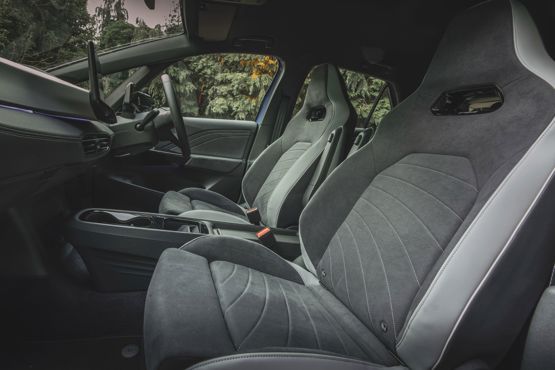
The ID3 has a roomy interior, thanks to its flat floor and raised seating position all occupants can travel in comfort. It’s worth noting, however, that only versions with the smaller battery can seat five. Pro S cars don’t have a middle rear seat, which may be inconvenient for some families.
Boot space is ample. With 385 litres of space on offer, it’s on par with the Golf. There’s an adjustable load floor, too, which provides a suitable way to hide the charging cables.
We were impressed with the ID3’s refinement, especially at higher speeds. There is very little wind or road noise and the powertrain is absent of any unwanted whines.
VW has been generous with the standard specification, so the front seats fitted to all ID3s are heated and come with height adjustment and built in armrests.
Safety and technology
VW has left one thing on its to-do list with the new ID: fix its infotainment system. Technically the system fitted to the latest model does run all-new software, which is faster, easier to navigate and, crucially, glitch-free. It does, however, operate via the same 10-inch touchscreen as before.
The minimalist dashboard integrates almost all the controls into the screen, which includes a row of touch sensitive panels for key functions.
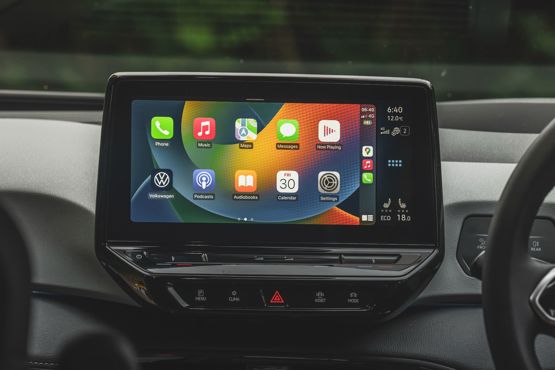
Next year, the ID3 will ship with a new 12-inch display and, for the first time, the volume and temperature control sliders will be illuminated.
The system is fairly simple to operate and includes VW’s voice operated personal assistant, which responds to the activation phrase “hello ID”.
In front of the driver there’s a second, smaller screen that display the car’s speed, remining range and trip computer. It can also show navigation instructions and information about the car’s assistance systems.
Parking sensors are fitted as standard, to the front and rear, but rear-view or 360-degree camera systems are only available as options.
VW does fit adaptive cruise control, with lane assist, as standard. The lane keeping system is fairly unintrusive and is one of the few that can be used in day-to-day driving without causing frustration.
Drivability and range
Both the ID3 Pro and the Pro S use a single electric motor that drives the car’s rear wheels. It develops 204PS and 310Nm.
The Pro has a WLTP range of 266 miles and is the more potent performer of the two, owing to its lighter weight. The Pro S can cover 347 miles, according to WLTP.
In real world testing we found both cars were able to return around 4.0mi/kWh. The Pro should comfortably cover 220 miles. Our test car was suggesting 235 would be possible.
The Pro S will break the 300-mile mark, but only just, unless you practice some serious hypermiling. It’s going to sit closer to 3.6mi/kWh, giving around 280 miles of real-world use.
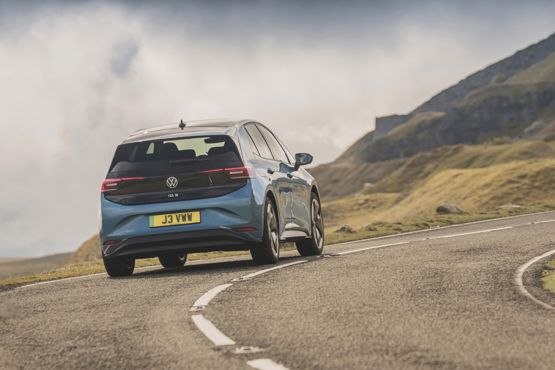
Neither model delivers the immediate power surge that some other EVs provide. The power delivery is progressive, but sufficient.
The ID3’s ride and handling is particularly well set-up, with both models giving a decent level of driver engagement and a comfortable ride.
With a 500Kg weight penalty over a basic Golf, the ID3 feels planted and stable. At higher speeds this gives a refined and relaxing ride, with a degree of firmness.
The real surprise comes when you drive the ID3 more keenly, as it feels nimble and belies its extra weight. It’s a great all-rounder that will satisfy a wide pool of drivers.
Company car tax and running costs
Prices start at £37,115, which is similar to the Astra Electric but quite a lot more than an MG 4.
All ID3’s attract a 2% benefit-in-kind (BiK) charge. For the cheapest derivative, drivers will pay as little as £12 per month (20% taxpayer). You can compare company car tax and running costs by clicking here.
The Pro S, with a few options, costs £46,450 and will attract a BiK charge of £15.50 per month.
Running costs over a typical four-year 80,000-mile cycle are 43p per mile, which makes the ID3 4ppm cheaper to run than the Astra but 8ppm more expensive than an MG 4 Long Range.
Optional extras are grouped into packs, although the ID3 comes with a reasonable standard kit list. adaptive dampers, matrix LED headlights and a panoramic glass roof comes as part of a £3,080 pack. A heat pump is also an option, costing £970.
Charging speeds
3-pin plug: 29hrs (Pro); 39hrs (Pro S)
7kW wallbox: 9hrs (Pro); 12hrs (Pro S)
11kW AC: 6hrs (Pro); 8hrs (Pro S)
120kW rapid(Pro max): 35mins (5%-80%)
170kW rapid (Pro S max): 30mins (5%-80%)
Matt has been an automotive journalist for nine years and has driven just about every new car and van that's on sale. As content editor - vehicles he is responsible for the automotive content on Fleet News and also contributes to Automotive Management. Prior to this, Matt worked in the automotive industry for 10 years.





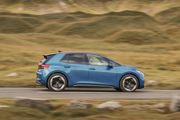
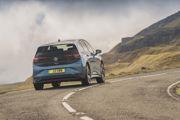
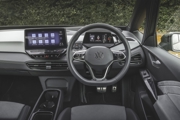



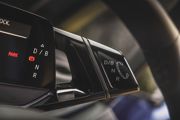


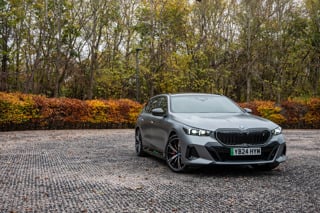
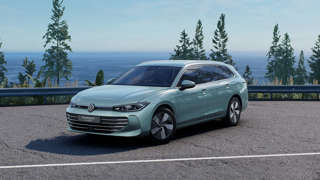













Login to comment
Comments
No comments have been made yet.